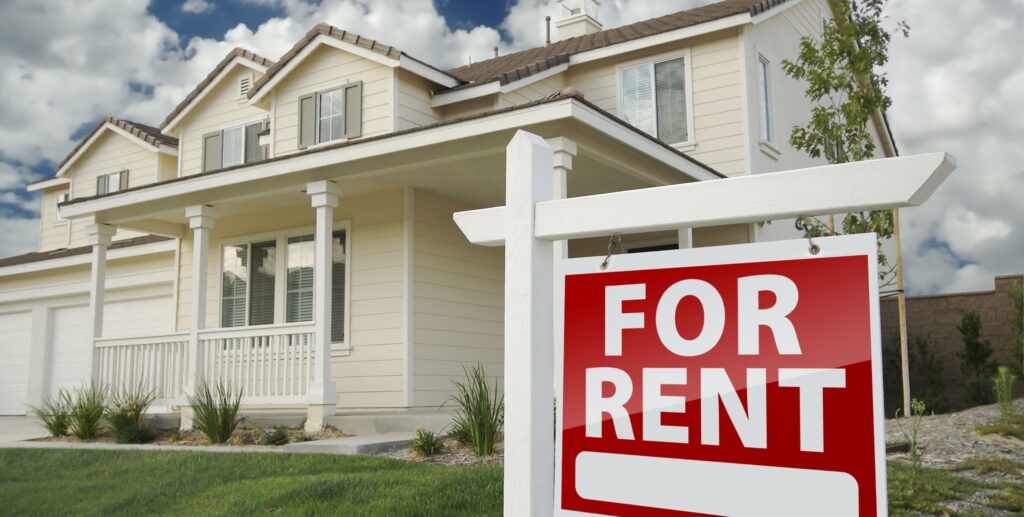Morgan Stanley real estate analyst Laurel Durkay appeared on CNBC recently to deliver the financial behemoth’s latest housing outlook. It was great news for property owners and a call to action for potential buyers sitting on the fence, waiting for rates to fall.
Such is the shortage of inventory; in the next decade, 2 million homes will need to be built to satisfy demand. This means the rental market is set to soar.
It’s an opinion shared among real estate number crunchers at lenders and data-heavy websites. “While inventory this May is much improved compared with the previous three years, it is still down 34.2% compared with typical 2017 to 2019 levels,” said Realtor.com‘s Sabrina Speianu.
An article in Forbes echoed Speianu’s comments: “For the best possible outcome, we’d first need to see inventories of homes for sale turn considerably higher,” Keith Gumbinger, vice president at online mortgage company HSH.com, told the business website. “This additional inventory, in turn, would ease the upward pressure on home prices, leveling them off or perhaps helping them to settle back somewhat from peak or near-peak levels.”
Low Inventory Keep Renters Renting
Limited inventory—particularly away from Sunbelt markets—has caused rents to remain elevated and stopped inflation from falling as fast as economists would like. The resultant high interest rates have created a perfect storm of unaffordability. Developer AMH Homes says in its markets, the cost of buying a home is 25% more expensive than renting. This has continued to push potential buyers toward rental homes.
Rental data site Yardi Matrix reveals that the rents apartment tenants pay to renew their leases are still rising. Rents in the Northeast and Midwest were up considerably over last year. The highest gains were seen in New York City, with a 4.8% year-over-year increase, and Columbus, Ohio, with a 3.6% increase.
Single-Family Homes Are a Coveted Investment
According to Morgan Stanley, single-family homes are the most lucrative asset class, with national developers such as AMH Homes focusing specifically on them. The build-to-rent single-family development boom is one of the hottest real estate sectors.
In 2023, builders completed an estimated 97,000 build-to-rent residential homes, including those outside build-to-rent communities, which represented an increase of 45% from the year before and a record number. Moving into a built-to-rent home gives tenants the feeling of living in a single-family home community while they prepare financially to move into a home of their own. It’s an ideal stopgap amid high interest rates.
Elsewhere, high rates have caused developers of large multifamily rental projects, such as Seattle-based Tyler Carr, who was due to break ground on a 104-unit development in Boise, Idaho, to press pause. And in Worcester, Massachusetts, at the center of the state, about 2,000 units have been delayed in coming to market.
“We certainly are seeing a decline in construction,” said Robert Dietz, chief economist at the National Association of Home Builders, told the Wall Street Journal. “Deals and financing have dried up.”
Housing data company CoreLogic, quoted in Forbes, recently analyzed single-family rental increases and found that of the 20 metros analyzed, New York posted the highest year-over-year increase in single-family rents in February 2024: 6.9%. Seattle came in second at 6.8%, followed by Boston at 6.4%.
Taking a step back and looking at the data with a wider lens, the numbers are staggering. According to Realtor.com, the typical listed home price grew by an astounding 37.5% overall from May 2019 to May 2024. The demand has created a golden opportunity for smaller investors who either can’t get approved for multifamily units or are unwilling to undertake the responsibility to laser-focus on building their single-family portfolios.
Essential Moves You Can Make to Build a Single-Family Rental Portfolio
So what can real estate investors do to make sure they are positioned to get into single-family rentals? Here are 12 moves to consider.
1. Increase your credit score
Let’s start with the basics. Without a high credit score, your chances of getting approved for a loan are severely diminished. There are many ways to start building your credit. The faster you start, the better.
2. Buy a rental first
While the desire to buy a home to live in yourself is understandably strong, it might not be the best move if you want to scale quickly. Keeping a low debt-to-income ratio will allow you to get approved faster and buy more homes in a shorter period of time.
3. House hack
Here’s another old-school technique: Assuming you already have a single-family home with additional space that can easily be rented, such as a finished basement, renting part of your home to help with your expenses, either to a full-time tenant or a short/mid-term guest, will help you save cash faster for your next property.
4. Live in your home and move every two years
If you are not in a rush to scale, this is a great way to avoid capital gains taxes while buying and selling your personal residence for profit. The tax code allows owner-occupants who have lived in a home for two out of every five years to forgo paying capital gains taxes on $250,000 of profit if single and $500,000 of profit if a couple. You can use the money made as a down payment for an investment property.
5. BRRRR
No article on scaling would be complete without mentioning the BRRRR method. In an era of high interest rates, be careful that your investment still cash flows once you have taken equity out of it, or at least breaks even. Also, be sure to estimate the rehab costs correctly so you have enough cash to complete them and get your property rented quickly.
6. Liquidate assets
Whether you are an empty nester looking to downsize your personal residence or have stocks or a 401(k), you can liquidate assets that are not appreciating as quickly as the real estate market is one of the fastest ways to free up cash for investment.
7. Borrow money from friends and family
If you want to start your single-family real estate investing career, borrowing money from friends isn’t a bad idea—provided they say yes! Borrowing from people you know serves the same purpose as a hard money lender (without the high interest rates), and once you refinance the property, you can pay them back and use the equity to continue to BRRRR.
8. Take out a HELOC
If your single-family investment will appreciate at a greater interest rate than you will pay on your HELOC, consider using some of the interest in your residence to start your investing career.
9. Move into your rental and rent out your personal residence
Since it is currently 25% cheaper to rent than buy in some markets, moving into a rental while renting out your personal residence will not only leave you ahead financially but lower your debt-to-income ratio. If you can manage to amass a down payment for your second home in savings, helped by your lower living costs, you’ll be on your way to building a portfolio.
10. Earn more money and minimize expenses
We might be in an era of quiet quitting, but there’s a lot to be said for earning the most money you can from your job, being strategic about getting promoted or building your career, and keeping your living expenses low to save and invest in real estate. If you cannot earn more money in your day job, consider a side hustle.
11. Move somewhere cheaper
Moving somewhere cheaper doesn’t necessarily mean moving into a bad neighborhood. It could mean bunking with mom and dad (if you are young enough, and they are willing), moving into a co-living space, or even moving overseas. The idea is to decrease your living expenses so you can save for your first investment.
12. Find a seller-financed deal
These are often easier said than done to find. However, there are always investors who are cycling out of being full-time landlords and don’t want the tax hit that comes with receiving a lump sum of cash, but prefer regular payments while enjoying their retirement. The advantage for a buyer is that the loan won’t show up on your credit reports, and qualifying might be easier than with a traditional lender and less expensive.
Final Thoughts
As ATTOM Data’s recent Top 10 Counties for Buying Single Family Rentals in 2024 report shows, single-family rentals are booming nationwide. Between 2023 and 2024, median three-bedroom rents increased more than median single-family home prices in 216, or 63%, of the markets analyzed.
Buying a single-family home can be the springboard for other purchases and is one of the easiest loans to qualify for, thanks to FHA lending guidelines. A 203(k) loan can also help you fix up your home, giving you a live-in BRRRR, which you can then refinance and repeat.
Not every deal will cash flow in this current market of high interest rates and minimal inventory. As long as you are not losing money, appreciation is the real play. Once rates drop, you can refinance and enjoy cash flow.
Join the community
Ready to succeed in real estate investing? Create a free BiggerPockets account to learn about investment strategies; ask questions and get answers from our community of +2 million members; connect with investor-friendly agents; and so much more.






